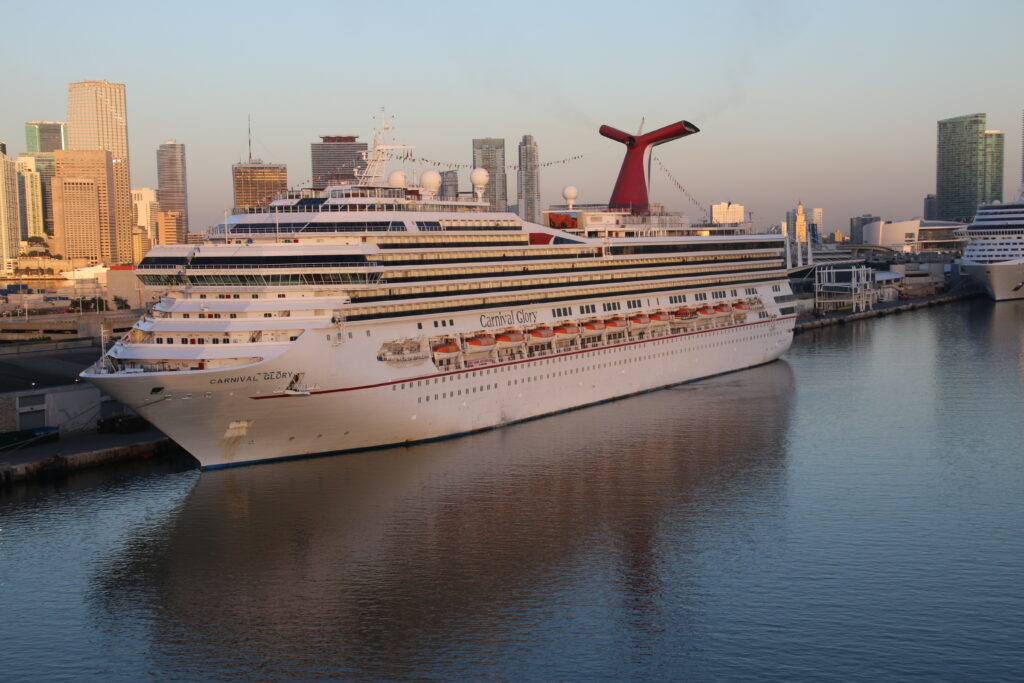US Environmental Protection Agency’s Diesel Emissions Reduction Act (DERA) recently allocated $2 million for Port Miami’s Shore Power Pilot Program.
This pilot program will be in partnership with Carnival Cruise Line at the new Cruise Terminal F.
After the final work of the program study has been done and the necessary infrastructure work finished, Carnival Cruise Line will commit to enabling the use of shore power for up to four vessels, starting in 2023.

Providing shore power — the process also known as cold ironing — means marine vessels can plug into the local electricity grid and turn off auxiliary engines while at dock. When using shore power, auxiliary systems, such as lighting, air conditioning, and crew berths use energy from the local electrical grid.
In February this year, Miami-Dade County signed a joint statement with six cruise companies – Carnival Corporation, Disney Cruise Line, MSC Cruises, Norwegian Cruise Line, Royal Caribbean Group, and Virgin Voyages – and Florida Power and Light to bring shore power to PortMiami.
Although this endeavor may represent significant financial investments by all parties involved, this grant helps offset the initial cost towards shore power at PortMiami, the port said.
“This DERA grant will help us fund shore power infrastructure making PortMiami the first seaport in Florida and the southeastern United States to provide this connection,” Mayor Daniella Levine Cava stated.
“Carnival welcomes this development and the opportunity to serve as the partner in the shore power pilot program at PortMiami,” Christine Duffy, president of Carnival Cruise Line said.
“In combination with our Terminal F project and the Carnival Celebration LNG ship we are bringing to Miami in 2022, the DERA grant provides additional momentum to the shared goal of enhanced environmental operations.”
According to the EPA report for the Port of Miami, by investing in shore power the port could reduce its carbon emissions by 35%.
Emissions for both sulfur and nitrogen oxides, which are dangerous to human health, could be reduced by 67% and 99% respectively, the Miami Herald reported.
Recent infrastructure and capital projects include other PortMiami programs aimed at building resiliency and reducing emissions, including the Port of Miami Tunnel, which eliminates an estimated 22,000 vehicles from downtown Miami streets; the infrastructure to accommodate six electric rubber-tired gantries (eRTGs), each featuring 100 percent electric power system, within the cargo yards; and the electrification of the cargo gantry cranes.
